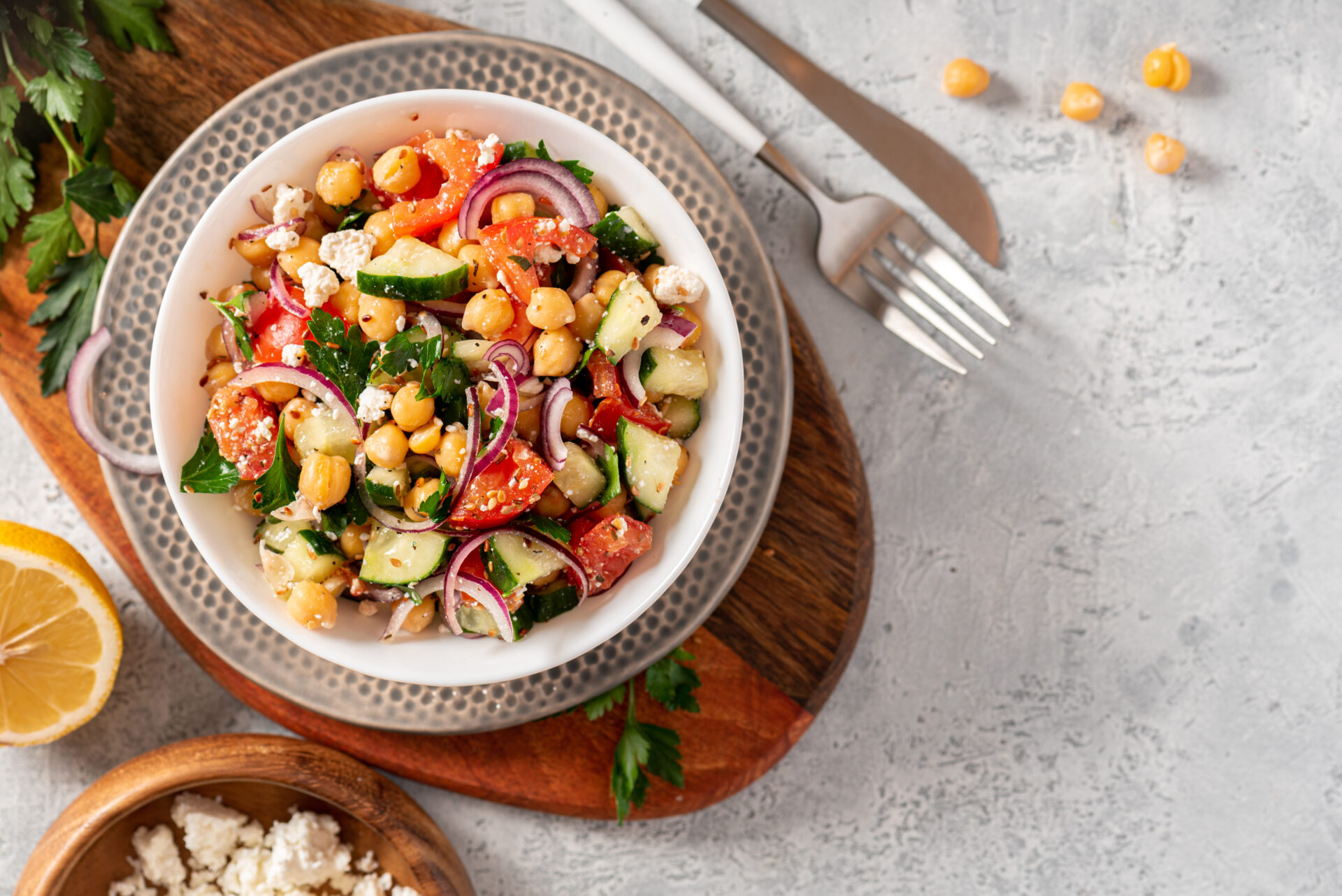
Tomato Chickpea Salad
It’s tomato time! Tomatoes are ripe and ready to eat – but maybe you have a few too many growing in your garden and are running out of ways to use them! This recipe combines plump tomatoes with chickpeas, onion, feta, and seasonings such as Member’s Mark™ Oregano for a side dish that can’t be beat. (Want to make it a main course? Try adding chicken or shrimp!)
Before we get to the recipe, let’s clear a few things up first!
Is There a Difference Between Chickpeas and Garbanzo Beans?
Nope — chickpeas and garbanzo beans are the same thing!
They’re just two names for the same legume:
-
“Chickpea” is the common English name.
-
“Garbanzo bean” comes from the Spanish garbanzo.
Botanically, they’re both Cicer arietinum, and you can use them interchangeably in recipes whether they’re canned, dried, roasted, or blended into hummus.
If you’re curious, the name “chickpea” comes from the French pois chiche, while “garbanzo” likely traces back through Old Spanish from a combination of words meaning “seed” and “dry.” So if you have a can of garbanzo beans in your pantry, you are cleared to use those instead!
Is There a Difference Between Cherry and Grape Tomatoes?
Yes — cherry and grape tomatoes are both small, sweet tomatoes, but they differ in shape, texture, and sometimes flavor.
Main differences:
| Feature | Cherry Tomatoes | Grape Tomatoes |
|---|---|---|
| Shape | Round, like a small cherry | More oval or oblong, like a grape |
| Skin | Thinner, more delicate | Thicker skin, a little chewier |
| Texture | Juicier, bursts more when bitten | Firmer, meatier flesh |
| Flavor | Sweet, bright, often a bit tangy | Sweet but more mild and less acidic |
| Shelf Life | Shorter (softer skin = spoils faster) | Longer (firmer skin = stores better) |
When to use:
-
Cherry tomatoes: Great for salads, snacking, roasting, or when you want a juicy pop.
-
Grape tomatoes: Better for grilling, skewering, or dishes where you don’t want as much juice leaking out
Can I Use Fresh Herbs in the Dressing Instead of Dried?
Yes — fresh herbs can be a great substitute for dried herbs in salad dressing, but be mindful of these tips:
-
Use more fresh than dried — dried herbs are more concentrated, so you generally need about 3 times the amount of fresh. For example, if a recipe calls for 1 teaspoon dried oregano, use about 1 tablespoon chopped fresh oregano.
-
Chop finely so the herbs distribute evenly and release more flavor.
-
Add them toward the end if you want their flavor to stay fresh and green, especially with delicate herbs like basil, parsley, or cilantro.
-
Expect shorter shelf life — dressings with fresh herbs don’t last as long in the fridge (usually 3–5 days) compared to dried, because fresh herbs can wilt or discolor.

Tomato Chickpea Salad
Ingredients
For the Salad
- 2 cups Canned chickpeas drained and rinsed
- 1 Avocado (optional) pit removed and diced
- 1 cup Cherry tomatoes halved
- 1 cup Cucumber quartered and sliced
- ¼ cup Red onion sliced
- ½ cup Feta cheese crumbled
- ¼ cup Fresh parsley chopped
For the Dressing
- ¼ cup Member's Mark™ Extra Virgin Olive Oil
- 1 tsp Dijon mustard
- 2 tbsp Red wine vinegar
- 1 tbsp Lemon juice
- ¼ tsp Member's Mark™ Fine Garlic Powder
- ¼ tsp Member's Mark™ Fine Onion Powder
- ½ tsp Member's Mark™ Oregano
- Member's Mark™ Himalayan Pink Salt Grinder to taste
- Member's Mark™ Black Pepper Grinder to taste
Instructions
- In a large bowl, combine the chickpeas, avocado (if using), tomatoes, cucumbers, red onion, feta cheese, and parsley.
- For the dressing: combine all of the ingredients in a jar and shake vigorously to combine. Store in the refrigerator for up to one week.
- Pour the dressing over the vegetables and toss gently to coat. Garnish with additional feta and parsley if desired, then serve.
